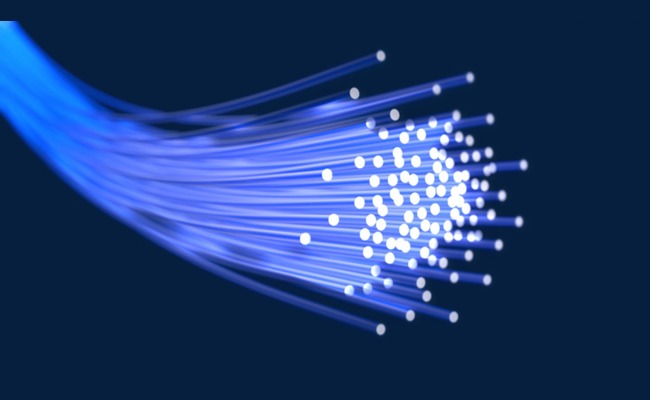What is optical fiber?

Optical fiber is a flexible, transparent fiber made of glass (silica) or high-quality absorbent plastic, slightly thicker than a human hair. It has the function of conducting waves or transmitting light, between the ends and ends of this fiber. They are usually arranged in bundles called fiber optic cables.
It can be said that optical fiber is a communication medium faster than coaxial cable many times. Unlike an electrically transmitted copper cable, optical fiber is less prone to noise, high speed (this is the data transfer rate, differentiated from the signal speed) and further transmitted. In recent years, the appearance of fiber optic cable makes coaxial cable gradually go into oblivion.
An optical fiber consists of 3 components:
Optical fibers are arranged in fiber bundles and covered by jacket outer coatings.
Fiber optic classification:
Optical cable consists of 2 main types: Multimode (multi mode) and Single mode (single mode).
Advantages of fiber optics:
How does a fiber optic transmit light?
Imagine you want to project a beam of flashlight into a small lane. Just beams go straight to the alley and light travels in a straight line. If the alley exists in a bend, we can leave a curved mirror to reflect the light beams around the corner. If there are many bends in the lane we can place many mirrors at the wall where the beam angle is placed so that it reflects from side to side. The example above gives us an idea of what happens in an optical fiber.
The light in the fiber optic cable passes through the core and repeatedly hits the coating. Because the coating does not absorb any light in the core, light waves can travel at very far distances. However, light can also be reduced by the impurity of glass. Signal degradation depends on the fineness of glass.
Forwarding system of fiber optic cable

Transmission Parts: Generate and encode light signals
In this unit will receive and direct optical devices to turn on and turn off the light in the correct sequence, thus creating a light signal. The transmission part is close to the optical fiber and there may even be a lens focusing light on the fiber optic cable. Lasers have more energy than LEDs, but vary depending on temperature and cost more. The most common wavelengths of light signals are 850 nm, 1,300 nm, and 1,550 nm.
Light regeneration unit: It may be necessary to increase the light signal
The parts for regenerating light are coupled along the cable to increase the light signal. Because in some cases the signal loss occurs when light is transmitted through optical fibers, especially over long distances. An optical regeneration unit consists of optical fibers with a special laser-based coating. When the attenuation signal enters this coating, the energy from the Laser allows the signaling molecules to become stronger to emit a new and stronger light signal, with the same characteristics as the input signal. .
Light receiver: Receive and decode light signals
This unit takes the signal of the transmitted digital light, decodes it and sends electronic signals to the user's computer, television, or phone. The receiver uses a photocell or photodiode to separate the light.
Address: 2A/12 Nguyen Thi Minh Khai Str., Da Kao Ward, District 1, Ho Chi Minh City
Hotline: 028 6650 4146
Email: info@fwi-ltd.com - MST: 0316482984
Website: www.fwi-ltd.com
Hotline
